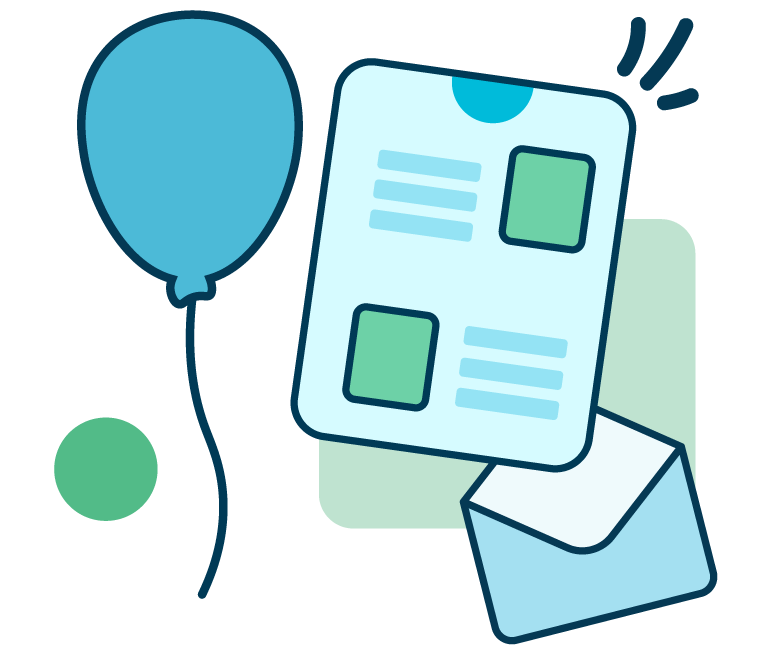10 Ways to Get Better Email Engagement

If you are using the marketing potential of email, you probably noticed that emails are never equally effective. One message may go unnoticed, and the second one explodes with an opening rate of 90% and a CTR of 20%.
Of course, you want all the letters to hit the mark. Then you will have to improve the newsletter and monitor the reaction of the audience with the help of different approaches, increasing its involvement.
Below we have collected 10 easy-to-implement, but effective ways to accomplish this task.

From developing integrations to strategic support, from creating creative concepts to optimizing results.
1.Segment Your Target Audience
And this advice successfully works always and everywhere. To prepare the most relevant offers, you need to have as much data about subscribers as possible.
Mass mailing is a successful practice that brings results. But the next stage in email communications is more targeted, personalized mailing based on the interests of subscribers. To do this, it is advisable to analyze and create the main segments in the address databases and then work with each of them separately.
What segments can be identified and how? RFM analysis based on purchase history will help identify, for example, the following customer segments:
- “New”,
- “Promising”,
- “Loyal”
- “Braking”
- “Sleeping”
- “SOS segment”.
Work with each segment separately. Try to persuade “new” and “promising” to purchase by setting up a chain of 2-3 letters where you will tell about the benefits of buying from you, share reviews and experiences of your “loyal” subscribers.
Do not hesitate to ask “loyal” people for feedback and encourage them to continue working with you. Prepare a special offer for those who have not yet made a final decision on the purchase or postponed it indefinitely.
Segmentation can also be based on the subscriber’s behavioral history. You should offer a bonus when placing an order, for example, free delivery, to those who open the letter and go to the site. This is a warm audience, most willing to make a purchase.
If you work in several markets at the same time, it is important to do segmentation depending on the country of residence of the client or the language he speaks. In the latter case, you will need localization and translation of emails in order to make them as effective as possible. This can be done using a special service, for example, The Word Point.
Since there are many segmentation options, it is important to identify the most priority ones and to create new ones after further development of these segments. This approach will allow not to delay with email-mailings and avoid base obsolescence.
2. Submit Relevant Content
The quality and relevance of the content directly determines the interest in your company and the loyalty of subscribers, and, accordingly, the open and conversion rates.
Study your audience and give it exactly what is useful and interesting for it. For example, if you sell pet food, do not “feed” subscribers with advertising letters with lists of the most suitable products. Better yet, send animal care training materials – readers will wait for such newsletters because they have practical benefits.
3. Configure Automation
Emails sent in response to a subscriber’s action are the most successful and effective since they correspond to his needs and interests. Try to create the maximum number of automatic chain letters that will be sent to customers in response to events on your site or in the mailing list.
Here are some examples of chains:
- An automatic chain of letters for all new subscribers, in which you thank for the subscription and talk about the benefits of working with you.
- Letters in response to the actions of subscribers in the mailing list (discoveries, clicks on specific links, etc.). If there is a transition from the letter to the page of a certain product, then you can send a selection of similar products that may be of interest.
- Trigger mailing in response to events on the site. Of the most popular is an abandoned cart, abandoned view, search.
And in order not to overdo it with letters,create a mailing card to understand what is sent to the subscriber and when.
4. Adapt Letters to Read from a Mobile Screen
Most users prefer to interact with brands using a smartphone, and this applies not only to email newsletters. In any case, use the design for small screens. Its distinctive features include:
- One column layout.
- Large photos, buttons, and fonts.
- The links are surrounded by empty space or non-clickable elements, which excludes incorrect transitions.
Creating a mobile version of email content provides the ability to stay in touch with you anytime, anywhere. In this case, marketers need to take care that the owners of the gadgets receive the mobile version of the mailing, and the owners of the desktops receive the standard letters.
Currently, most companies prefer the mobile version of the newsletter to adaptive design, and this is absolutely the right approach.
5. Take Care of the Proper Design of a Call toAction Button
Letters are prepared for the client to perform an action: he bought a product, subscribed to a page, etc. By the number of targeted actions, you can evaluate the effectiveness of email distribution.
If the client is interested in your offer, he must clearly understand which button to click on in order to perform this action. Thus, the effectiveness of mailings depends on how well the emphasis on the call to action is made.
There is no universal target button template. But it should be:
- Noticeable. Use large, contrasting colors to the background (optimally 35 × 45 px). However, do not overdo it with brightness and animation.
- Concise and understandable. The recipient must understand what event will occur after pressing the button. Use moderately original call text with a length of 1-3 words.
- Unobtrusive. Determine at what stage of the relationship with the user you are in order to make an adequate offer: ask for feedback, subscribe or purchase a product. Form a call to action on the increment, corresponding to the needs of your audience at this stagу, for example, “Learn more” “Give it a try,” etc.
6. Use Words That Affect the Effectiveness ofLetters
The researchers found that the words “thank you” and “download” in the subject line significantly increase the CTR. The word “free” does not affect the delivery rate of letters. This destroys the common myth about automatic filters that send emails with the word “free” to spam. The exclamation mark and dollar sign also do not affect the rate of delivered letters.
Please note that the rate of open letters when using the word “free” in the subject line of the message drops significantly. Users believe the stereotype and consider free offers to be an attempt to deceive them. Also, contrary to popular belief, users rarely open letters in the subject of which words that emphasize urgency are used. The only exception is the word “tomorrow.” It increases the rate of open letters.
7. Add Social Network Buttons
Econsultancy came to the conclusion that the presence in the letter of at least one sharing element through social networks increases the click-through rate by 30%. Three or more increase this figure by 50%.
Subscribers have the opportunity to follow the company’s pages on social networks or share a letter there, and this has a positive effect on engagement. Make it easy for the laziest subscribers – help them share your wonderful content with ready-made tweets.
8. Test Different Ideas and Approaches
When creating newsletters you may have doubts when you have developed two versions of letter design, and both of them are good. In such cases, conduct A / B testing.
For example, if you can’t choose, send a letter with a red or green button: send a version with a green one to 20% of subscribers version, and let another 20% receive an email with the red button. After analyzing indicators, send the version that got more clicks to 60% of your subscribers.
9. Reduce the Number of Unsubscribers
Over time, some recipients may be tired of your mailings and unsubscribe from them. This, unfortunately, leads to a smaller database.
The desire to unsubscribe may occur because:
- you send messages too often
- your letters are irrelevant or simply uninteresting to the recipients.
0.5% or less is a normal indicator of the number of unsubscribers. Although statistics in different industries may differ.
If the subscriber has clicked on the “Unsubscribe” button, do not let him just leave. Offer an individual schedule for receiving letters or other means of communication with your brand, for example, social networks.
If the subscriber leaves you because of dissatisfaction with the quality of the content, check this fact with a small survey. Its results will help you understand the causes of discontent and correct mistakes.
10. Keep Track of Time
This is especially true if you work with several foreign markets that are significantly geographically distant from each other. Since your task is to ensure that subscribers open the newsletter, read and act here and now, you need to find the right time for this. Therefore, send letters according to local time, when users open the email list most often.
Instead of Conclusion
In order for the newsletters to bring results, you should carefully work on the correct display of letters, and their content. Come up with a catchy theme that echoes the preheader to increase the rate of opening a newsletter, segment the audience and send personalized letters that will cause the recipients to read. The effectiveness of email newsletters depends on how often you use new approaches. Although the analysis of your own actions is very important, do not dwell only on your results. Look at what competitors are doing and focus on the right key performance indicators (KPI).